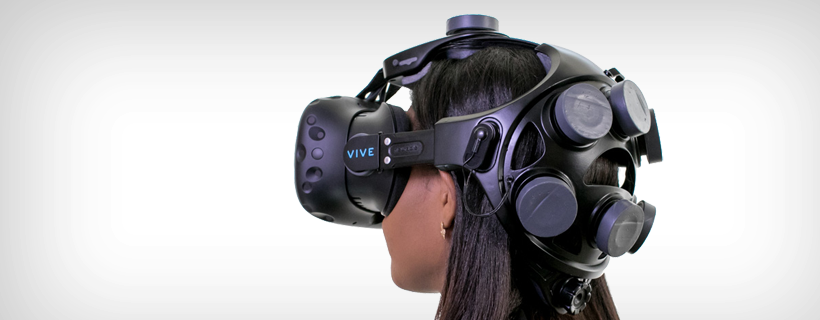At Loup Ventures, we’ve been spending more and more time researching and reflecting on how everyday technology will leverage the human brain to provide value to users. We call this subject consumer neurotechnology, and we want to share some of our thoughts.
A Piece in Five Parts
Consumer neurotechnology is a broad topic, and from its principles, to the underlying technology, to companies building commercial products, there’s extensive information to cover. We’ve created a five-part series, of which this is Volume I. Our goal is to introduce consumer neurotechnology and the frameworks we use to think about it.
First, we’ll discuss consumer neurotechnology from a high-level, introducing our motivation for exploring this field, as well as some definitions and a taxonomy that helps inform our thinking. Following this introduction, the remaining volumes will contain dissections of specific consumer neurotechnology products: we’ll discuss the technology, offer some analysis, and in some cases create market models to help understand the opportunity.
If anything here interests you, excites you, or perhaps inspires questions, comments, or concerns, you can reach out to our Neurotechnology Specialist at avery[at]deepwatermgmt.com. If you’re conducting exciting neurotechnology research, we’re eager to learn; if you’re building a neurotechnology product (whether consumer or medical) we want to hear from you!
Motivation: Why Consumer Neurotechnology?
The goal of any consumer technology product is to provide value to a user by interacting with that user in some way: the user can communicate to the technology and/or the technology can communicate to the user. The basic constraints on technology, then, are how it can communicate with the user, and how the user can communicate with the technology. Ultimately, all communication to the user winds up in the brain, and all communication from the user originates in the brain. Existing consumer technology modalities use proxies to communicate with the brain, and to receive communication from the brain. For example, the sound of a notification is a proxy for placing information in the user’s brain; speech is a proxy for brain-situated intention when using a voice command to control Alexa.
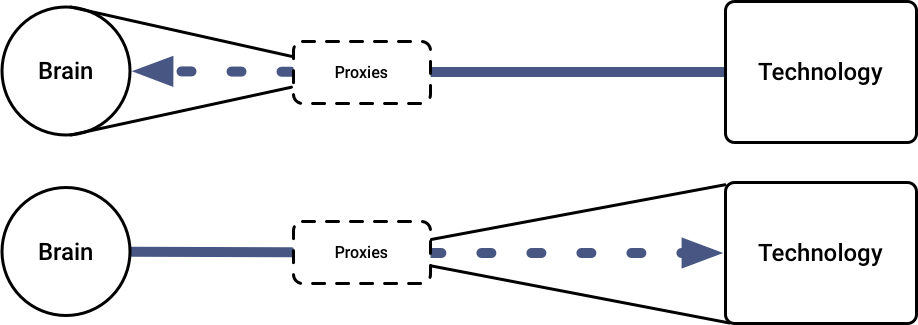
Consumer neurotechnology is exciting because it does away with the proxies. In principle, by removing proxies, consumer neurotechnology enables methods of communicating with the user and methods for the user to communicate with technology, which have been hitherto impossible.
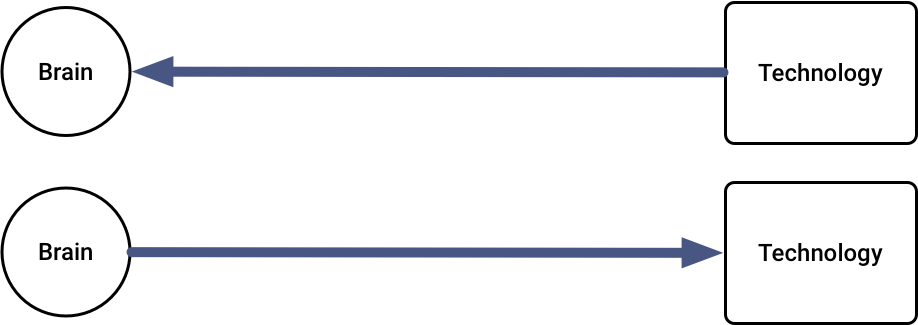
Definition: What is Consumer Neurotechnology, and What Are its Principles?
“Neurotechnology,” as used here, refers to devices/products that are explicitly designed to interact with neurons. These can be neurons in the brain, neurons in the spinal cord, neurons in cranial nerves, motor neurons in the body, or any kind of sensory neuron. What this notably excludes are products informed by neuroscience (or its close cousins, cognitive (neuro)science and psychology), but which don’t directly interact with neurons.
“Consumer” refers to the fact that any devices or products discussed herein are targeted at consumers; in particular, this excludes products/devices intended for medical applications (we’re interested in medical applications, but they’re outside the scope of this article).
Consumer neurotechnologies are devices that:
- are designed to interact with neurons;
- are non-invasive, and therefore don’t require surgery or any other skin lesion;
- are optimized for convenience and ergonomics, so they can be used at scale by a large user-base;
- are not intended for medical purposes, and therefore won’t be regulated as medical devices;
- may or may not utilize other biosignals like pulse or eye-tracking.
Types of Hardware
Three important technologies that underlie many consumer neurotechnology products are electroencephalography (EEG), electromyography (EMG), and transcranial direct current stimulation (tDCS).
Electroencephalography (EEG)
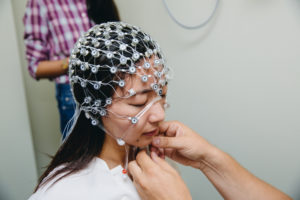
EEG uses electrodes on the surface of the scalp and other locations on the head to record electrical signals deriving from populations of 10,000-50,000 neurons. EEG has an extensive literature and patent landscape around it and has been applied to many scientific investigations and commercial products. Broadly, the benefits of EEG are that it can record neural events on the timescale of milliseconds (“high temporal resolution”) and can be incorporated into other head-worn devices like headphones. The major difficulty of EEG is that it records very noisy signals, which makes it challenging for engineers to use EEG signals to infer a user’s brain state. This is especially true with consumer versions of EEG, which tend to be even noisier (though less expensive and more ergonomic) than research-grade EEGs.
Electromyography (EMG)
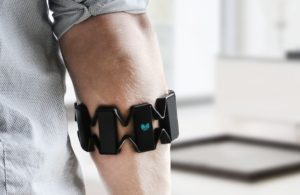
EMG, in contrast, uses sensors to record electrical activity from “motor units,” which are defined as the combination of alpha motor neurons in the spinal cord and the muscle fibers they innervate. EMG is used in medicine as a diagnostic tool, but in neurotechnology, it can be used to reconstruct actual and intended motion of a user’s hand and/or arm. Because EMG doesn’t need to record through the skull, the electrical signals it records are less noisy than EEG signals; however, EMG apparatuses have to deal with the fact that the limb they record from might be in motion.
Transcranial Direct Current Stimulation (tDCS)
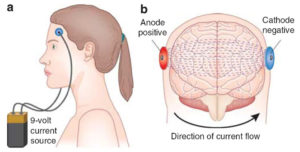
Transcranial direct current stimulation, or tDCS, is a technology where low direct current is delivered to the brain using electrodes. TDCS has medical applications in various psychiatric disorders but is also being introduced to consumer applications as well, which is expanded on later in this series.
Principles and Taxonomies
In our article on bioelectronic medicine, the medical sibling of consumer neurotechnology, we gave a brief overview of the human nervous system. Much of this background knowledge is also useful for understanding consumer neurotechnology.
When considering any domain, it’s useful to have principles that give structure to the domain. So, we can ask: what principles structure the domain of consumer neurotechnology?
- Medium of innovation: Hardware, Software, Integrated. Does the product involve novel hardware, software, or both?
- Device-type: Record, Stimulate. Neurotech that records is technology that listens to signals in neurons; neurotech that stimulates is technology that writes signals to neurons.
- Form-factor: General Headset, Headphones, Glasses, Armband. Purely for convenience, this non-exhaustive taxonomy is useful for understanding the form-factors of consumer neurotechnology. General Headset form-factors are headsets whose purpose is solely to interact with the brain, like the Emotiv Epoc+ EEG headset. Headphones, such as Mindset, are neurotechnology products in the form-factor of headphones (which is useful since headphones are already designed to be worn on the head, i.e. close to the brain). Glasses refer to a form-factor where neurotechnology is part of a headset with a display, such as augmented, virtual, or mixed reality glasses—Neurable is an example of this approach. Armbands are products like Myo, which have the form-factor of an armband or wristband. Headphones and Glasses are subsets of General Headsets, but it’s useful to treat Headphones and Glasses as distinct categories because so many applications fall into these categories; General Headsets act as the wildcard, then.
- Effect-type: Control, Neuromodulation, Feedback, User Characterization, Physiological, Sensory, Developer. Effect-type characterizes how the consumer neurotechnology in question delivers its value. Control means the neurotechnology is a computer/machine control mechanism. Neuromodulation means the neurotechnology modulates neural activity and/or neurochemistry in a direct way. Feedback means signals recorded via neurotechnology are used as part of a feedback system to establish a desired cognitive or emotional state in the user. User Characterization describes neurotechnologies whose purpose is to characterize the user and their mental state. Physiological means the neurotechnology helps establish a desired physiological state in the user. Sensory covers neurotechnology that influences, rectifies, and/or augments a sensory percept. Developer is a wild-card, meaning the technology lets developers choose their own value-propositions, e.g. through an SDK. These are not mutually exclusive.
Using these descriptors, we can characterize different consumer neurotechnologies, and this taxonomy provides a means for comparing different investment opportunities. As we follow up in future volumes, we’ll use this framework to help analyze consumer neurotechnologies in terms of their value-adds, business models, and ethics.
Disclaimer: We actively write about the themes in which we invest or may invest: virtual reality, augmented reality, artificial intelligence, and robotics. From time to time, we may write about companies that are in our portfolio. As managers of the portfolio, we may earn carried interest, management fees or other compensation from such portfolio. Content on this site including opinions on specific themes in technology, market estimates, and estimates and commentary regarding publicly traded or private companies is not intended for use in making any investment decisions and provided solely for informational purposes. We hold no obligation to update any of our projections and the content on this site should not be relied upon. We express no warranties about any estimates or opinions we make.
